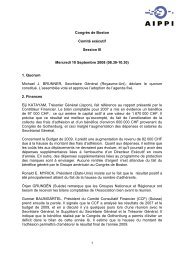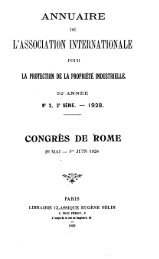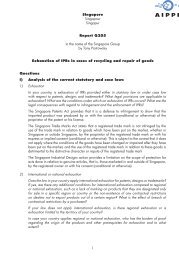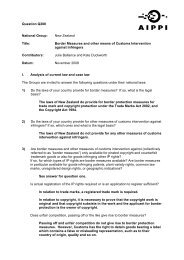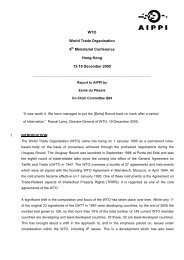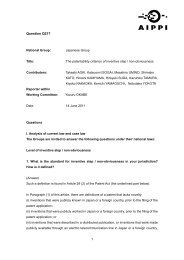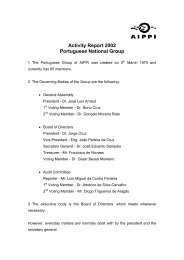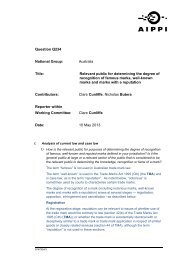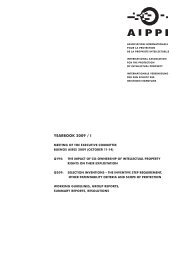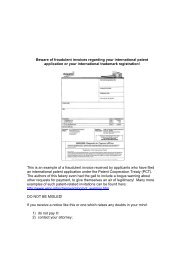Question Q214 RAPPORT - AIPPI
Question Q214 RAPPORT - AIPPI
Question Q214 RAPPORT - AIPPI
You also want an ePaper? Increase the reach of your titles
YUMPU automatically turns print PDFs into web optimized ePapers that Google loves.
34<br />
SUMMARY<br />
I. Analysis of current law and case law<br />
In France, the protection against the risk of trademark dilution, as an autonomous violation<br />
of trademark rights that is independent of trademark infringement, is considered as<br />
protection against the violation of the distinctive character of a reputed or well-known<br />
trademark. This occurs when the attractive force of the trademark is weakened.<br />
Admissibility to claim protection against dilution, and thus proving repute or fame, is an issue<br />
of fact that is assessed by the Courts discretionarily, taking account of all relevant elements.<br />
The prior trademark owner must show that, at the time of the events in dispute, a significant<br />
part of the relevant public (even in the case of a market niche) in a substantial part of the<br />
territory was aware of its trademark to a certain degree. What counts is public awareness,<br />
but it is not necessary that the trademark be used in the territory where protection is sought.<br />
To punish a violation of the distinctiveness of a reputed or well-known trademark, case law<br />
requires that – in addition to repute or fame – the plaintiff evidence:<br />
i - the existence of a link between the signs in dispute, which supposes a certain degree of<br />
similarity between the signs, but not necessarily a likelihood of confusion,<br />
ii - the damage caused in terms of the distinctive character, or at least a serious risk of<br />
damage. In practice, such damage is difficult to prove.<br />
The system of protection against the risk of dilution allows to challenge:<br />
- the filing of a later trademark (even though with respect to French trademarks, French<br />
law does not provide this)<br />
- the use of the later trademark – it being specified that such use must be in the course<br />
of trade and without due cause,<br />
- for different goods or services, but also for identical or similar goods and services.<br />
Under the system of protection against the dilution of French trademarks, the breaching<br />
party is held civilly liable but not for infringement, so that the procedural rules and the<br />
penalties provided with respect to infringement cases do not apply. However, under the<br />
system of protection against the dilution of Community trademarks, violations are considered<br />
as infringements. Therefore, two procedural systems coexist in France, depending on<br />
whether the reputed or well-known trademark whose distinctiveness is weakened is a French<br />
trademark or a CTM.



